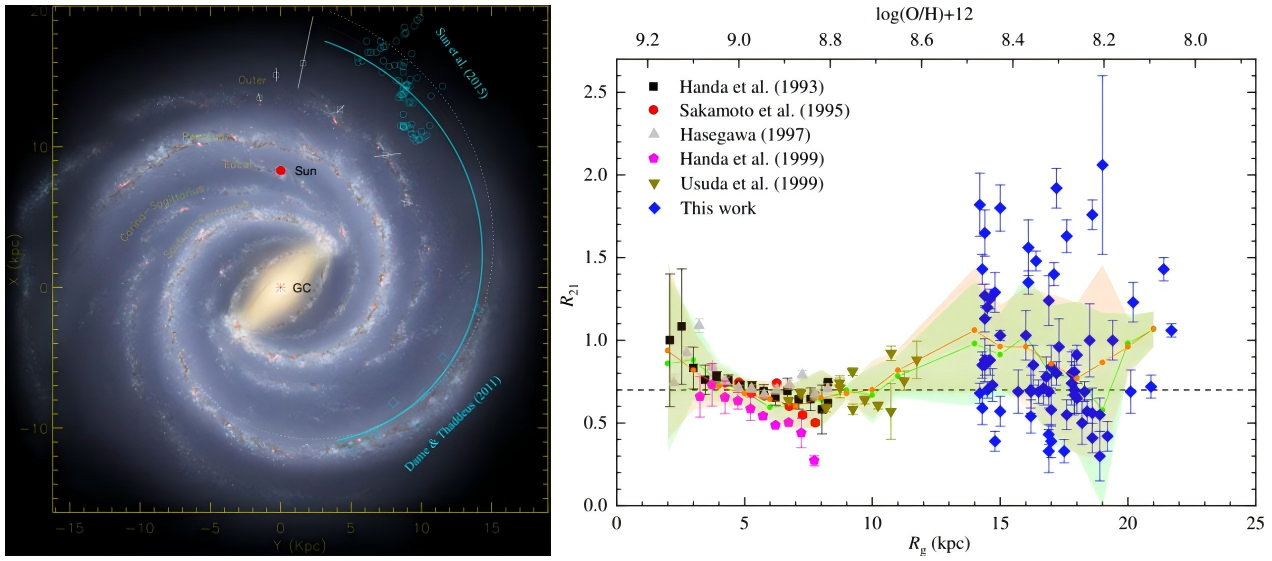

How Molecular Clouds Survive the Galaxy's Harsh Outskirts
The outskirts of the Galaxy are ideal laboratory to study molecular clouds and star formation in a metal-poor environment. Different from the inner Galaxy (such as solar neighborhood), the molecular gas environment in this region lacks a long and complex history of star formation, mainly due to its low gas density, low metallicity, and less influence from spiral arm perturbations. However, because these molecular clouds are distant, widely distributed across the sky and highly diffused, and their internal star formation activity are extremely weak, there have been very few observational studies on them. Therefore, physical properties of the Galactic edge clouds and their star formation mechanisms have not been fully elucidated to date.
Recently, a research team led by the star formation and evolution research group at the Xinjiang Astronomical Observatory (XAO) of Chinese Academy of Sciences used the IRAM 30-meter telescope in Spain to observe a large number of molecular clouds at the Galactic edge with a Galactocentric distance of 14-22 kpc. In conjunction with the CO (1-0) data from the "Milky Way Imaging Scroll Painting" project of the Purple Mountain Observatory, they systematically studied the variation of the CO (2-1)/(1-0) line ratio (R21) in the molecular clouds at the edge of the Milky Way.
The results have been published in the "Astronomy and Astrophysics".
Based on the measurements of the R21 ratio, the researchers found that: (1) the average R21 value in the Galactic edge is significantly higher than that in the inner Galaxy and nearby molecular clouds, consistent with observations in metal-poor galaxies; (2) the R21 ratio in the Galactic edge clouds shows a high degree of spatial dispersion; (3) statistical analysis indicates a significant spatial correlation between high R21 ratio gas and dense clumps as well as star formation activity.
This study elucidates the physical mechanism behind the elevated R21 ratio in metal-poor environments, providing important observational results for the study of molecular cloud evolution and star formation in extreme environments.

Left: Distribution of molecular clouds (cyan circles) at Galactic edge; Right: Variation of the R21 ratio with the Galactocentric distance.
Attachment Download: